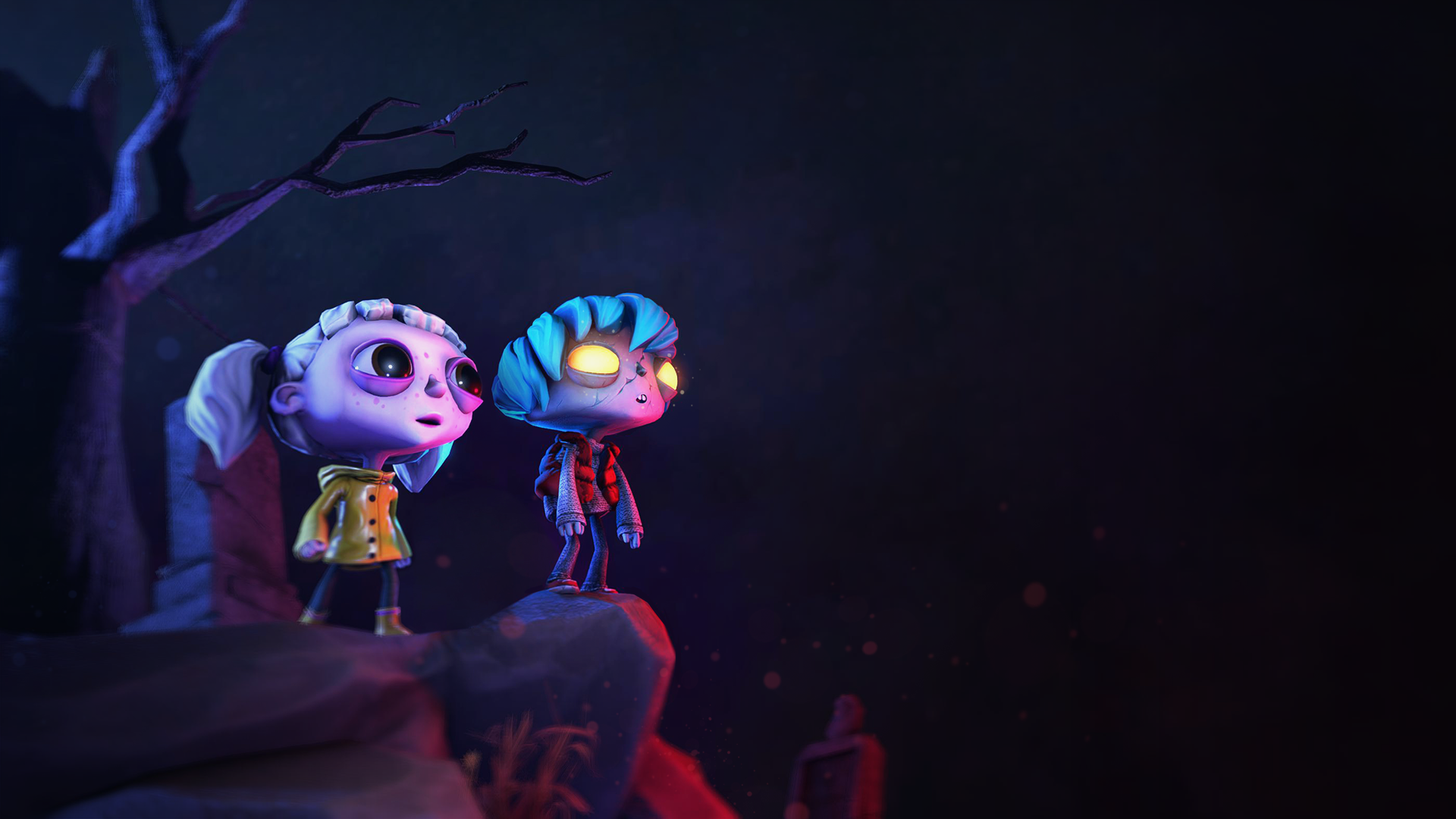I first noticed it in 2021.
It was my dad’s birthday, but I decided to buy myself a present instead (sorry, Pops): Lost in Random, the dice-based adventure with a weirdly original aesthetic that looked almost like a clay, stop motion animated film, which is what its developers were inspired by. A year before release, co-game director Olov Redmalm told Gamespot the team at Zoink was taking inspiration “from Laika films to even Tim Burton movies.”
In the final product, those Tim Burton inspirations are obvious; just look at Even’s pale skin and tired eyes. She’s a 12-year-old Hot Topic mall goth from the mid-2000s in video game form. This makes sense — Tim Burton’s films and the characters that inhabit them have a very dark, weird, and often moribund aesthetic, all of which apply to Lost in Random and its citizens, who look like the word “sun” doesn’t exist in their dictionaries.
Lost in Random.
Lost in Random is the first game I noticed in a trend I’ve come to describe as a “Burtonlike,” or a game that borrows heavily from Burton’s distinguishable film aesthetics. But one game does not make a trend, even when that game is followed by a genre-pivoting sequel. What does make the Burtonlike a burgeoning genre are the rash of recent releases whose aesthetics clearly borrow from what make Burton’s films so distinctive, and one quality that stands out is a reliance on stop motion animation, a core tenet of the Burtonlike game genre.
While his filmography houses a mix of live action and animated features, Burton’s stop motion films, like Corpse Bride and Frankenweenie, have undoubtedly found an audience in those mall goths mentioned earlier. (One of Burton’s most famous films, stop motion or otherwise, is The Nightmare Before Christmas, which he produced. Henry Selick actually directed Nightmare, which is notable as he also directed Coraline, the most Burtonlike non-Burton film if I’ve ever seen one.)
Those stop motion films have clearly influenced the direction of the Burtonlike genre. 2024 saw Harold Halibut, a narrative-focused adventure game whose clay-crafted, tired-eyed protagonist starred in a stop motion journey on an underwater spacecraft. The cozy horror puzzle game The Midnight Walk released earlier this year, featuring beautifully sculpted clay puppets brought to life via stop motion animation. (Of course, the developers at MoonHood Studios, which include some Lost in Random vets, referenced Nightmare as an inspiration.) Players guide Potboy, bursting with puppy-like energy, through short story-like chapters, learning about the weird-ass, Burtonlike characters along the way.
This fall will see another Burtonlike release, Gloomy Eyes. It follows a curious girl and her zombie companion as they seek to bring the sun back to their macabre world. Like The Midnight Walk, it’ll be a cozy horror, and its official descriptors namedrop our boy Timmy B and his stop motion work as parallels. Gloomy Eyes will be a “self co-op” game in which you bounce between the two kids, solving puzzles and exploring ghoulish, diorama-like levels. It looks very charming, and perhaps the game that looks most obviously like a Burton film so far.
Surely, Lost in Random, Harold Halibut, The Midnight Walk, and Gloomy Eyes aren’t the only Burtonlikes out there. (Though I’m going to say Mafia: The Old Country, a “more like this” game listed on The Midnight Walk’s Steam page as of this writing, is definitely not a Burtonlike.) Would Bramble: The Mountain King be considered a Burtonlike? It certainly captures the dark fairytale storytelling found in other Burtonlikes. How about the Little Nightmares series? Those games have an aesthetic that’s not too far away from Burton’s, but may be too creepy in ways other Burtonlikes are not.
And that might be the heart of a Burtonlike game — wearing the aesthetics of stop motion horror without actually being too horrifying. Not all cozy horror games may be Burtonlikes, but all Burtonlikes may be cozy horror.
As more games point to Tim Burton as inspiration, perhaps they’ll start describing themselves as Burtonlikes instead of just pointing to The Nightmare Before Christmas as an influence. Horror is only getting more popular, and the cozy-ification of it may mean more Burtonlikes are on the way. Though I may have left my Hot Topic shopping days behind me, I’m still eager to see this subgenre grow.


